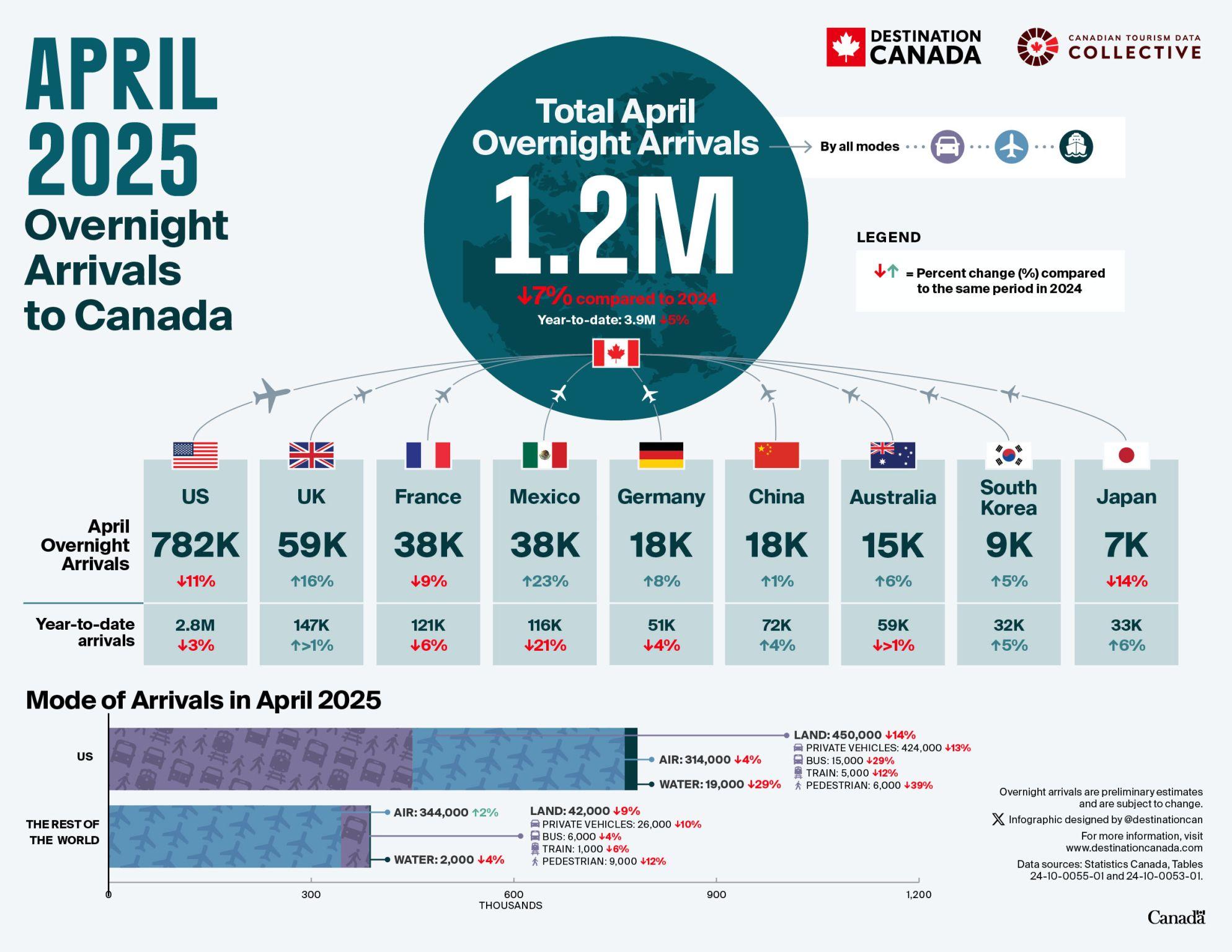Truman and Marriott to bring three high‑profile hotel brands to Calgary
W Calgary, JW Marriott and Autograph Collection hotel to anchor landmark $1.47B development in Culture + Entertainment District
Canada welcomed 1.2 million overnight international visitors in April 2025, marking a 7 per cent decline compared to the same month in 2024, according to new figures from Destination Canada and the Canadian Tourism Data Collective.

The latest figures bring total year-to-date overnight arrivals to 3.9 million, down 5 per cent over the first four months of last year.
The United States remained Canada’s largest source market, accounting for 782,000 overnight visitors in April. However, arrivals from the U.S. fell 11 per cent year-over-year and are down 3 per cent on a year-to-date basis, with 2.8 million arrivals so far in 2025. The U.S. decline significantly contributed to the overall dip in inbound visitation.
Several overseas markets, however, showed positive momentum. The United Kingdom saw a 16 per cent increase in April arrivals, reaching 59,000. Mexico posted the strongest growth among major international markets, with 38,000 visitors representing a 23 per cent year-over-year gain.
Other key markets showed more mixed performance:
Land arrivals slump while air travel remains dominant
While air arrivals remained the dominant mode of entry for international visitors, land arrivals—particularly from the United States—continued to weaken.
In April, 658,000 visitors arrived by air, including 344,000 from the U.S. and 314,000 from other countries. U.S. air arrivals rose slightly by 2 per cent, while air arrivals from the rest of the world dropped 4 per cent.
Land travel, including by private vehicle, bus, train and foot, fell 14 per cent overall. Private vehicle crossings were down 13 per cent, pedestrian crossings dropped 39 per cent, and rail arrivals fell 6 per cent. Bus arrivals saw the sharpest drop, declining 42 per cent compared to April 2024.
Water-based entries totalled 21,000 for the month—2,000 from the U.S. and 19,000 from other countries—marking a 4 per cent drop overall.
Broader implications
While some markets continue to rebound, the overall decline in April suggests ongoing volatility in Canada’s inbound tourism sector. Destination Canada says it is continuing to monitor trends as part of its ongoing analysis of post-pandemic travel recovery.
The April results reflect preliminary estimates and are subject to revision as more detailed border and travel data becomes available.

Infographic courtesy of Destination Canada.

W Calgary, JW Marriott and Autograph Collection hotel to anchor landmark $1.47B development in Culture + Entertainment District
Canada welcomed 1.2 million overnight international visitors in April 2025, marking a 7 per cent decline compared to the same month in 2024, according to new figures from Destination Canada and the Canadian Tourism Data…
IHG Hotels & Resorts is introducing its voco hotels brand to the Canadian market with three upcoming properties in Montreal, Niagara Falls, and Toronto. The announcement marks the premium brand’s entry into Canada…
Niagara Falls-based Fallsview Group has expanded beyond Ontario with the acquisition of the Hyatt Regency Calgary, marking the company’s first venture into Western Canada.